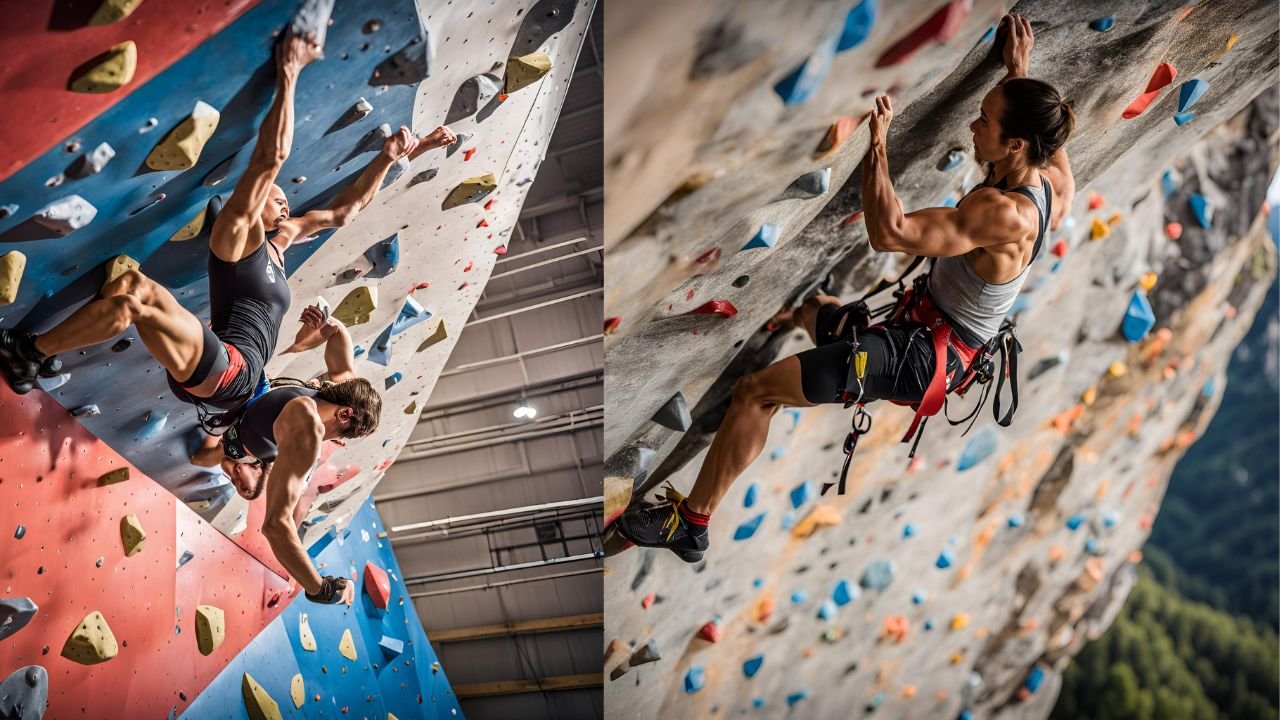
Sport climbing, an stirring and dynamic discipline, made its Olympic debut at the Tokyo 2020 Games, bringing a fresh and unique competitive format to the world stage. The sport, which tests an athlete’s strength, dexterity, speed, and abidance, was showcased through a combined event, making it an instigative and grueling contest for the rovers. In this composition, we will explore the crucial aspects of the sport climbing combined event, its format, its Olympic debut, and the athletes that made history in this adrenaline- pumping competition.
1. The elaboration of Sport Climbing
Sport climbing has grown fleetly in fashionability over the once many decades, evolving from its roots in out-of-door gemstone climbing to a largely competitive, structured inner sport. originally rehearsed on natural gemstone conformations, rovers sought new challenges by spanning artificial walls, and ultimately, sport climbing came a encyclopedic ally honored discipline with its own governing bodies, competitions, and technical ways. As interest in climbing grew, the sport set up its way into colorful transnational competitions, and its addition in the Olympics marked a corner for the climbing community.
2. What’s Sport Climbing Combined?
Sport climbing combined is a format that brings together three different disciplines of climbing into a single event. In the Olympics, rovers must exceed in all three to contend for a order. The three factors are
- Speed Climbing : In this event, two rovers race up a fixed route on a 15- cadence wall as presto as possible. This discipline is each about speed and perfection, as rovers aim to hit the top buzzer in the shortest quantum of time.
- Bouldering : In bouldering, rovers attack short but incredibly delicate routes( called “ problems ”) on a 4.5- cadence wall without ropes. The thing is to complete as numerous problems as possible within a set time, with points awarded for reaching certain holds or completing the route.
- Lead Climbing : Lead climbing tests abidance, where rovers essay to lift as high as possible on a wall over 15 measures within a limited time. Rovers secure themselves with ropes as they lift, and the athlete who climbs the loftiest wins the event. The combined event requires rovers to showcase their versatility, learning not just one discipline but excelling across all three, which makes it a unique and demanding challenge.
3. The Olympic Format
In the Olympic concerted format, athletes contend in all three disciplines in a single day. Their scores from each discipline are multiplied together, and the rambler with the smallest concerted score wins. This format adds an redundant subcaste of strategy, as rovers need to be professed in all disciplines and precisely manage their energy situations across the day.

The rovers’ performances in each discipline are ranked, and the rankings are also multiplied together to give a final score. For illustration, if a rambler finishes 1st in speed, 2nd in bouldering, and 3rd in lead, their final score would be 1 x 2 x 3 = 6. The athlete with the smallest total score at the end of the competition wins the gold order.
4. Tokyo 2020 Sport Climbing Olympic Debut
The sport climbing combined event made its Olympic debut at the Tokyo 2020 Games, and it incontinently captured the attention of sports suckers worldwide. Held at the Aomi Urban Sports Park in Tokyo, the event saw 20 of the world’s top joker and womanish rovers contend for the first- ever Olympic orders in climbing.
The Olympic debut featured memorable performances from rovers who showcased their inconceivable chops across all three disciplines. In the men’s event, Spain’s Alberto Ginés López made history by winning the first- ever gold order in sport climbing, while Slovenia’s Janja Garnbret dominated the women’s competition, cementing her status as one of the stylish rovers in the world.
The Tokyo Games were an important moment for the climbing community, as the sport was introduced to a global followership, and the athletes’ performances helped showcase the violent physical and internal demands of the sport.
5. Challenges and difficulties of the Combined Format
While the sport climbing combined event was thrilling to watch, it also sparked some debates and challenges within the climbing community. The combined format was seen as a concession to fit the sport into the Olympic schedule, but it wasn’t widely popular among athletes and suckers. Some rovers bettered in only one or two disciplines, which made it delicate for specialists in a single discipline to contend with all- around athletes.
For illustration, speed rovers, who are generally specialized in contending up walls in seconds, had to acclimatize to the abidance- grounded nature of bouldering and lead climbing. Likewise, lead rovers and boulderers had to train for speed, a discipline that requires a different skill set.
6. Looking Forward Paris 2024 and Beyond
Sport clamming addition in the Tokyo Olympics was just the morning. As the sport looks forward to the 2024 Paris Games, changes have been made to the format. For Paris, the climbing event will be resolve into two separate competitions a combined bouldering and lead event, and a standalone speed event.
This change will allow athletes to concentrate more on their technical disciplines while still showcasing their versatility in the combined format. The growing fashionability of climbing is anticipated to continue, with further athletes, suckers, and countries embracing the sport. Its addition in the Olympics has not only increased the sport’s visibility but has also inspired a new generation of rovers to take up the challenge and pursue excellence in this physically and mentally demanding discipline.
Conclusion
Sport climbing combined brought a fresh and exciting new dimension to the Olympics in Tokyo, testing athletes’ abilities across three very different and challenging disciplines. As the sport continues to evolve and grow, both in the Olympic arena and in the broader sports world, sport climbing promises to be a lasting fixture in future Games. The introduction of a new format for Paris 2024, with a separate speed competition, shows how the sport is adapting to its growing popularity and the needs of its athletes. Whether you’re a seasoned climber or a newcomer to the sport, the Olympic sport climbing combined event offers an inspiring display of skill, strength, and determination.




![NZ v AUS [W] 2024/25, New Zealand Women vs Australia Women 2nd ODI, Wellington Match Report, December 21, 2024 NZ v AUS [W] 2024/25, New Zealand Women vs Australia Women 2nd ODI, Wellington Match Report, December 21, 2024](https://i3.wp.com/img1.hscicdn.com/image/upload/f_auto/lsci/db/PICTURES/CMS/393400/393416.6.jpg?w=1200&resize=1200,0&ssl=1)




